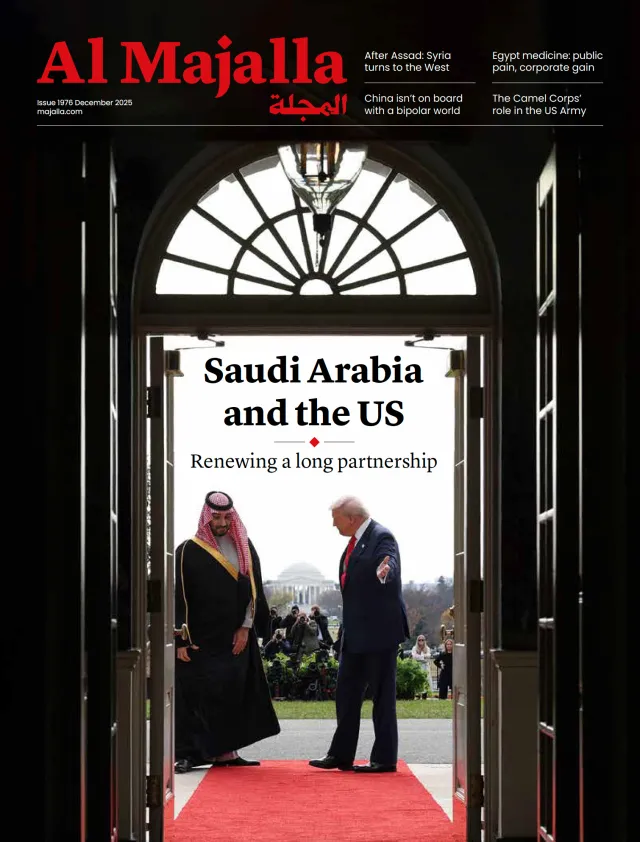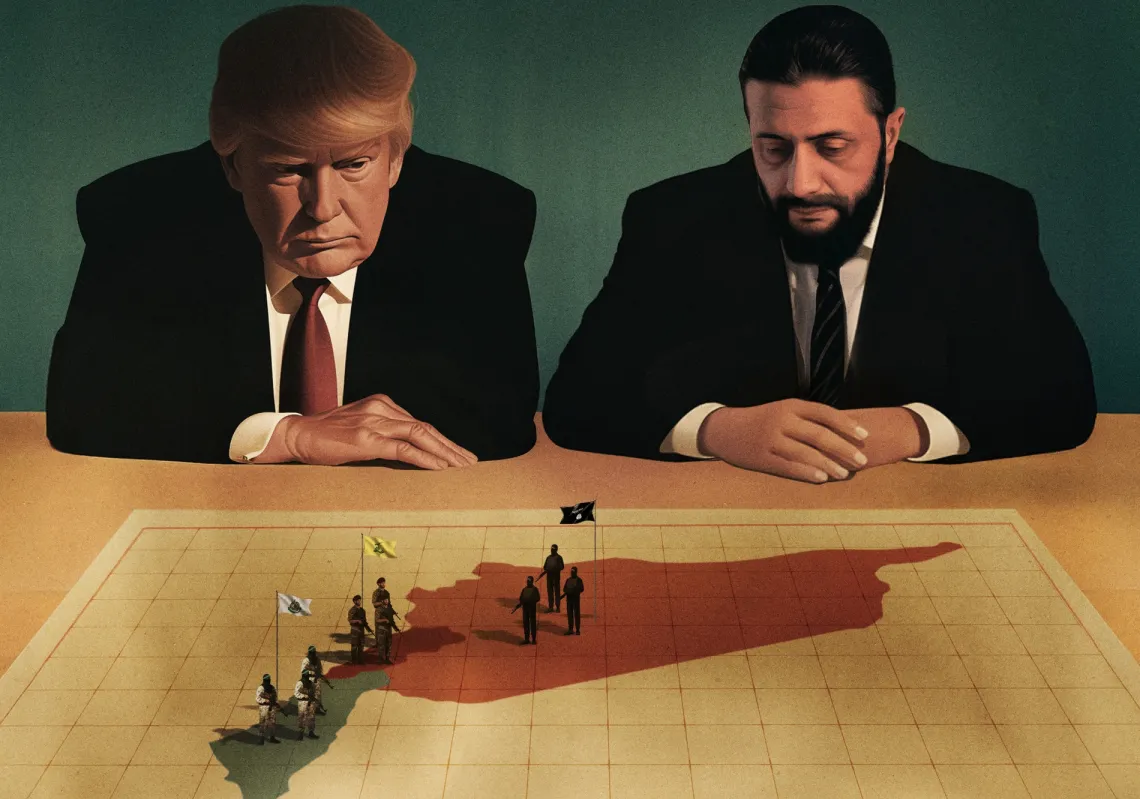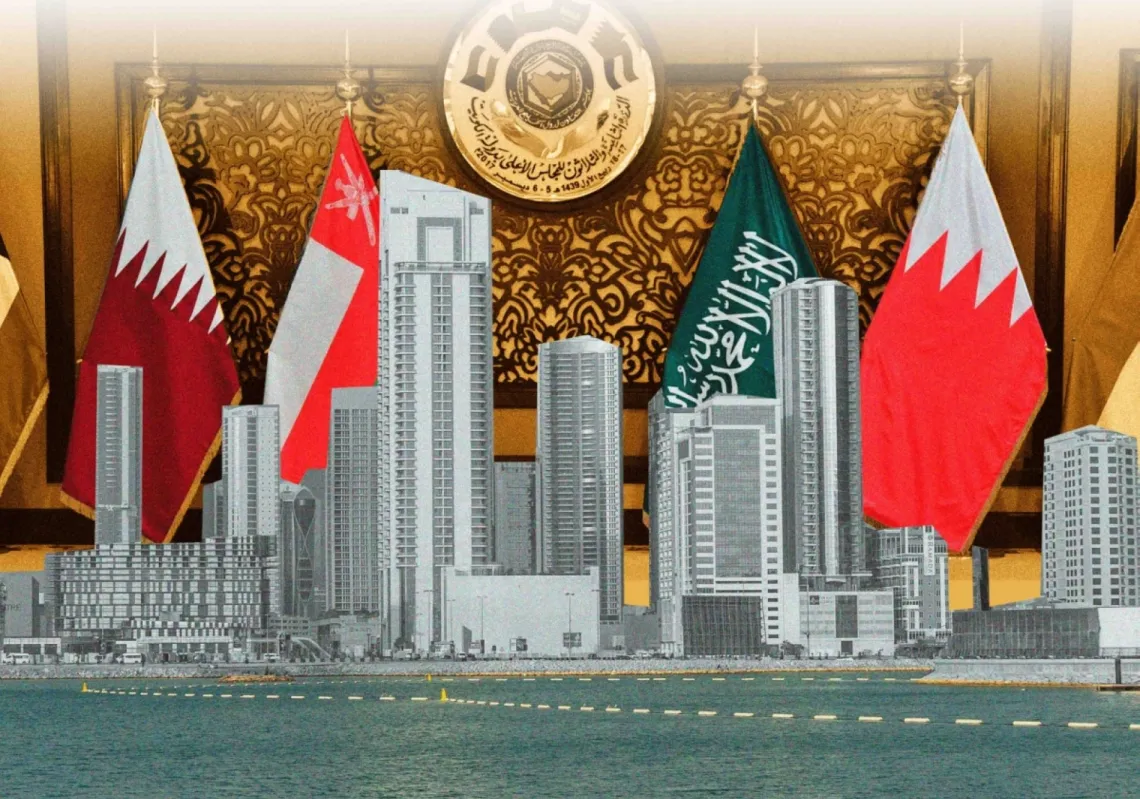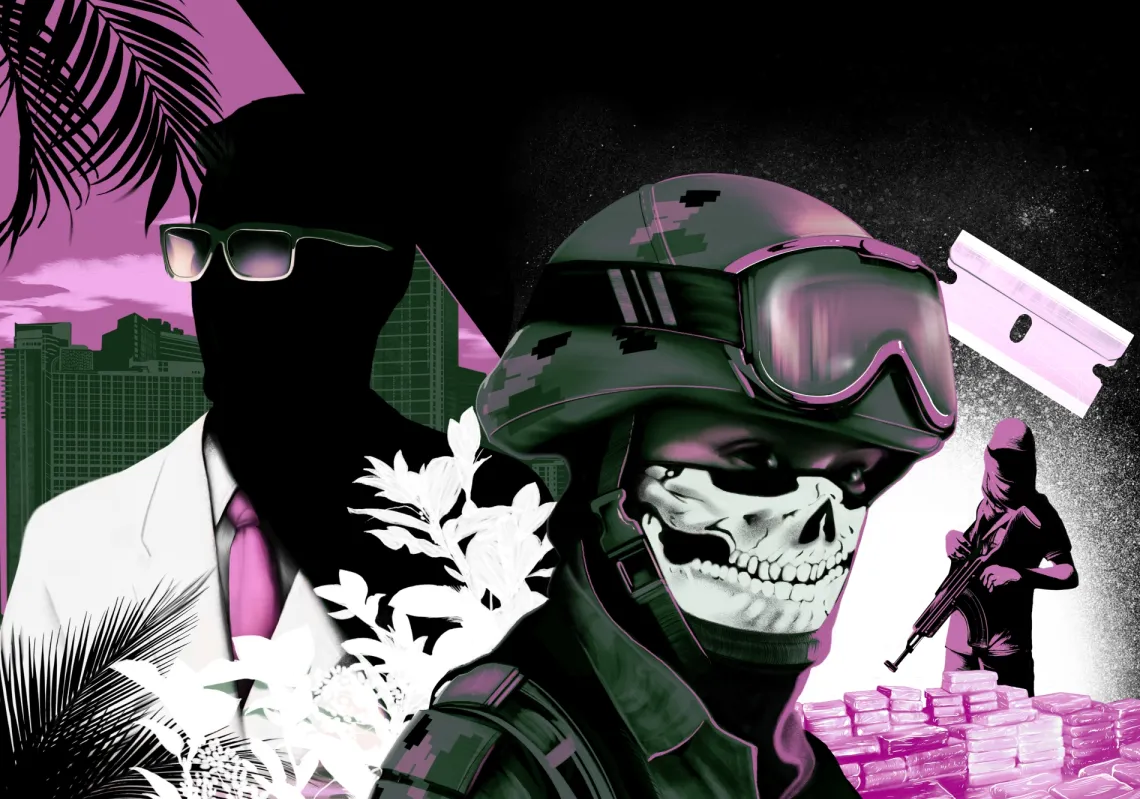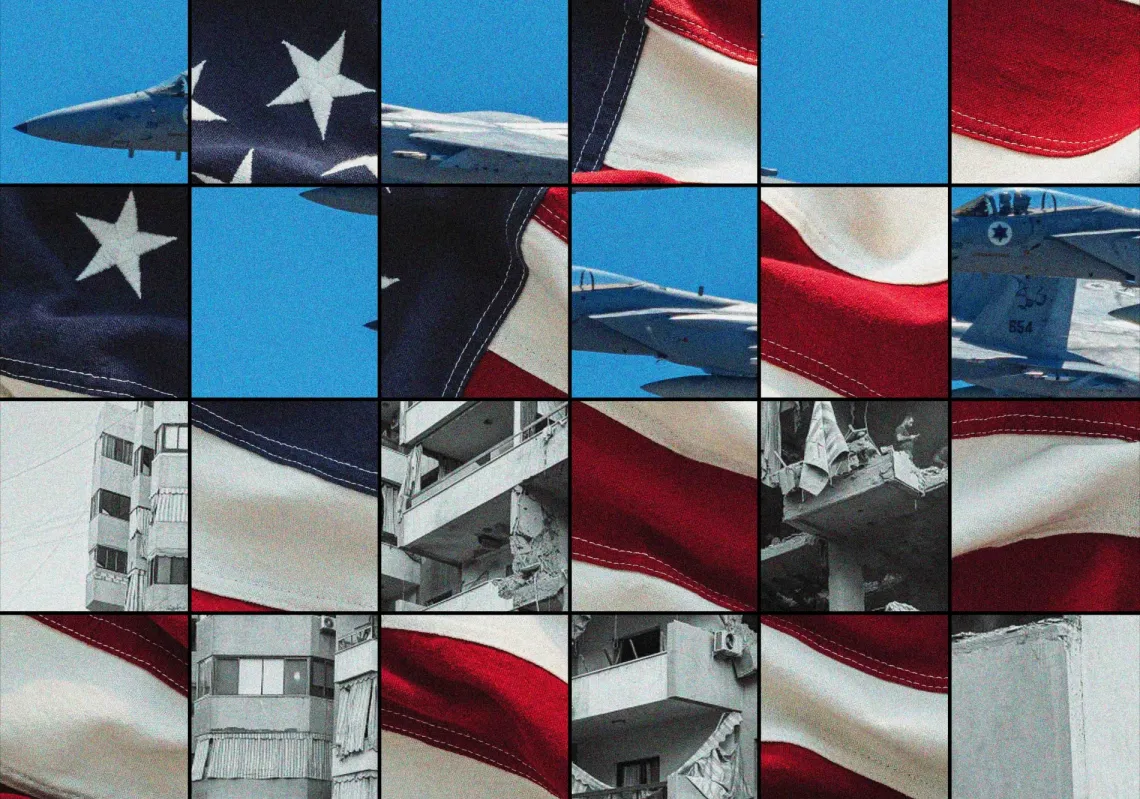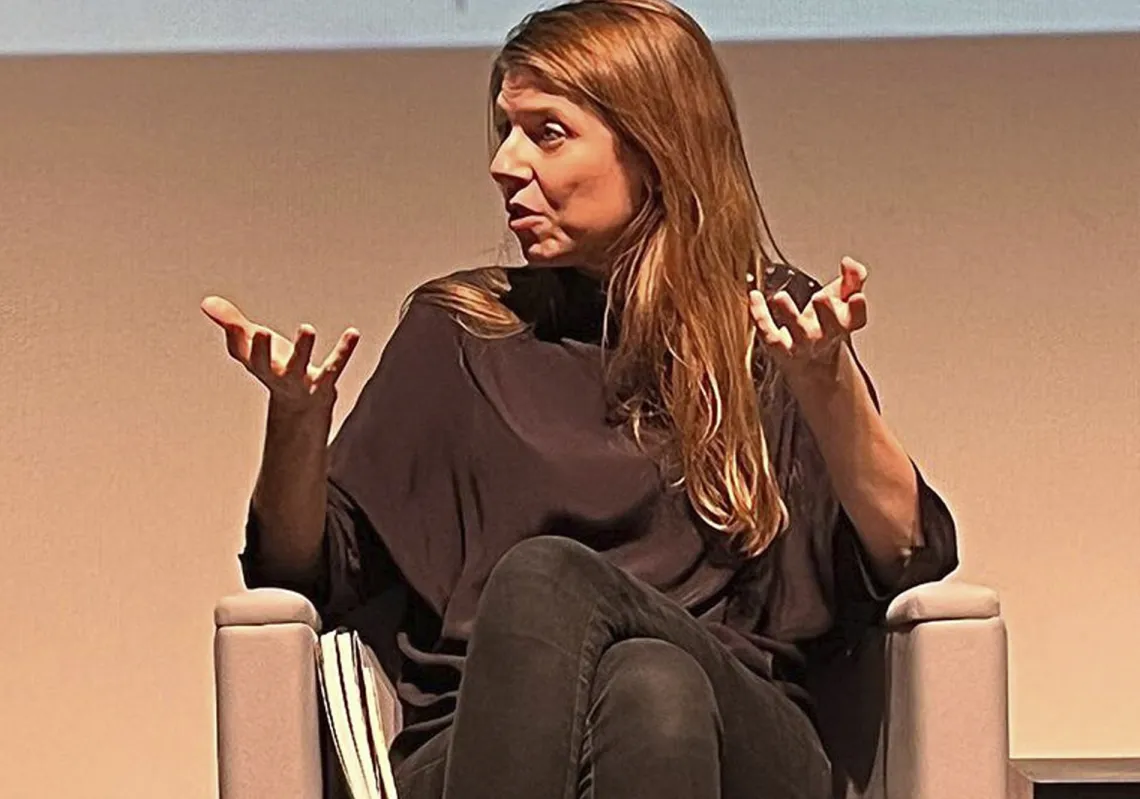Lebanese filmmaker Myriam el Hajj was only seven when warring factions agreed to end her country’s 15-year civil war. It was not before time. Around 150,000 people were killed, and a million people—nearly a third of the population—were displaced. Fuelled both from within and from abroad, the war unfolded in relentless cycles, engulfing every corner, fracturing cities and villages into isolated enclaves ruled by armed militias.
One fault line split Beirut in two (East and West). It ran near the National Museum, which was devastated by the conflict. Its doors were sealed, and parts of its collection were buried beneath layers of concrete for protection.
Like many Lebanese families, members of el Hajj’s own household and community got caught up in the fighting. Approaching 50 years since the outbreak of war (on 13 April), el Hajj took to the stage at the French Cultural Centre Theatre, adjacent to the museum, to present the Lebanese premiere of her documentary Diaries from Lebanon.
Seven years in the making, it was a big moment. Recalling her first audience in January, she says: “There were times when I looked into their eyes and saw them drifting into distant, dark, and ugly places... I was afraid they would pull me in, too.”

A generation’s odyssey
She speaks of wanting to free the Lebanese from fear, enabling them to resist the entrenched status quo by dismantling its illusions and exposing its failures. This is what her film’s three protagonists do. Behind the camera, her voice weaves her own personal narrative into the larger story of her homeland.
Screened at film festivals in Berlin, Cairo, and Marrakech, Like Love Stories encapsulates the odyssey of a generation of Lebanese artists and activists—some shaped by the war, others born in its shadow—who came of age amid successive security and economic crises, living in a state whose governments, institutions, and agencies are still controlled by the very factions that once waged war.
Over time, the weight of frustration swelled. Across Lebanon in 2019, it erupted as a popular uprising. Diverse in age and background, protesters sent a message to the ruling elite: “We are the people’s revolution... you are the civil war.” Six years later, this uprising and its demands are yet to fade to nothing.
A year later, however, there was a different kind of explosion. On 4 August 2020, a colossal 2,750 tonnes of volatile chemicals erupted in a cataclysmic blast at Beirut’s port, killing 218, injuring 7,000, and reducing an entire district to rubble in one of the world’s most powerful ever non-nuclear detonations. In the aftermath, many emigrated.

Beyond language
Among those who stayed, artists tried to express the magnitude of the accumulated tragedies. Some used realism, others experimental surrealism. As the shockwaves reverberated, new movements were born. “In the face of such devastation, traditional language became powerless, trivial even,” says young filmmaker François Yazbek.
“I had to go beyond language, beyond disaster—perhaps even beyond history itself. I had to envision Beirut in a post-human era.” His latest film, Nécrose (Necrosis), borrows its title from a clinical term denoting a symptom of death, either of an entity or of an organ that threatens the survival of its host—a metaphor for Beirut.
Another filmmaker from the same generation, Jean-Claude Boulos, articulates his own recipe for creative resistance. “Venture into the forgotten underworld, seek out voices cast into the shadows of Lebanon’s rigid artistic framework, and harness their creative force into meaningful, defiant collectives.” This philosophy underpins his latest film project, Unframed.
Finally, photographer and 3D painter Yasmina Hilal carries a lighter and rolls of negatives between her hands, burning the past even as she conjures its ghosts. Her latest series Bshouf Hali Fiki (I See Myself in You) is an act of both destruction and resurrection. “I learned early on that the image is never perfect—that art, much like life, is something to be tampered with, reshaped, and reimagined,” she says.

The achievements of these four artists unfold somewhere between hope and despair, isolation and crowds, exile and endurance, defiance and surrender, repression and the relentless pursuit of a new artistic language. As Lebanon marks half a century since the outbreak of its civil war, Al Majalla takes a closer look, amidst the words from a song by Lebanese diva, Fairuz: “May it be a memory that never happens again.”
Subcutaneous trauma
The events of Like Love Stories come to an abrupt halt. A moment of stillness lingers before a deafening explosion shatters the silence, its reverberations trapped within the theatre’s enclosed walls. Some shift uneasily in their seats, others clutch their chests, a few even duck their heads, involuntarily bracing for an impact.
The Beirut explosion surges through this film’s narrative, eclipsing all that came before it and casting a heavy shadow over what remains. Before, a popular uprising, with protesters hoping to topple the government and finally get rid of Lebanon’s sectarian leaders. After, brooms sweep shattered glass and rubble from ruined facades.
El Hajj captures it all, from the tranquillisers swallowed by activists just to keep going, to the names of new victims inscribed onto white balloons released into the sky to the sound of Christian and Islamic hymns, distilling the rawness of collective trauma into the emotional and psychological fractures etched onto her characters.
All suffer loss and disillusionment, including political activist Joumana Haddad, journalist and musician Perla Maalouli, and war veteran George Mfrrej (known as Abu al-Layl), who has reinvented himself countless times. In one of the film’s most haunting images, he is seen leaning on his cane, walking in circles on the asphalt before his home. He is a man adrift, lost without a compass.
The director closes the film with a quiet reckoning. "I could not save anyone by joining the revolution, nor could I free my family from their grey resignation, but I saved myself. The film liberated me from fear... Change happens only when we stop chasing it."

On the night of the film's screening, some Lebanese celebrated the appointment of senior judge Nawaf Salam as the country's new prime minister, still hopeful of change. Inside the theatre, a technical glitch caused the explosion to replay.
"These tragedies live beneath our skin," murmured one audience member. "No matter how many times they are replayed, on the news, in films, we never stop recoiling." This prompts someone else to share their thoughts. "At least the new prime minister was one of our revolution's demands," they say. "We have not been entirely defeated."
Unframed
In Lebanon's northern capital, Tripoli—an often-overlooked city steeped in history—enthusiasts have reclaimed an old building, transforming it into a cultural haven. The centre, named Marsah (an old Levantine word for 'theatre'), nods to the distinct pronunciation of the city's residents, who watch for artistic delegations from Beirut.
On the edge of a modest projection screen at Marsah, Jean-Claude Boulos and his artistic partner Bachir Asmar sit poised, ready to introduce their audience to six short films chronicling the lives of six 'underground' artists. They operate outside the commercialised art scene, beyond traditional media outlets (that are often governed by the same centres of power and wealth that govern the country).
"Despite their diverse talents, they share a common defiance against a system entrenched in political hegemony," says Boulos. "Most of them, like me, were born at the tail end of the civil war into a world still shaped by its shadows."

In August 2020, Asmar and Boulos were leaning on the balcony of their home near the port when the blast tore through the city. Both were injured, Boulos badly—his skull was fractured, leaving him in intensive care. His glasses were swallowed by the rubble. "In hospital, I photographed everything through the lens of my phone, then zoomed in to make sense of it," he recounts to Al Majalla.
The explosion not only destroyed buildings, it erased entire archives of artistic projects. It left Boulos wanting to "finish what I started years ago". Telling stories has a purifying power, he says. "It lightens the burden of the past, confronts the brutality of the present, and calms the anxieties of the future. To keep telling is an act of resistance against those who want to trap you in isolation."
Even as the blast threatened to silence him, he refused to be driven away. "I stayed. I don't regret it. I did what I could with the only weapon I had: my camera. But I no longer searched in the public squares. I started digging beneath them."
His latest documentary, Unframed, takes us into the lives of young artists for one intimate day, including actress, playwright and director Tamara Saada, actor, performer and wardrobe stylist Bshara Atallah, writer and influencer Donna Khalifa, collage artist Sarkis Julfian, painter and multidisciplinary artist Carla Habib, and photographer and collage artist Yasmina Hilal – each a voice rising from the margins, each a testament to the unyielding power of creative defiance.
Embrace of family
Yasmina Hilal's grandmother lived through Lebanon's golden age—an era when the country was celebrated as the 'Switzerland of the East'. Once a symbol of prosperity, this past fuelled the nostalgic imagination of post-war generations. "But today, no one cares about it," Hilal says. "The wounds are still open. Nostalgia now operates in short cycles. Every five years, we long not for the 1960s but for the time just before our latest catastrophe. The destruction never stopped."
An eye for art, elegance, and beauty, her grandmother lived in a big home in the coastal district of Ramlet al-Baida. As a child, Hilal was her beloved protégée. "She would brush my hair, dress me in the finest gowns, and tell me that she saw herself in me. My mother gave me my first camera." Later, her grandmother draped her in a dress from her engagement years, woven from the fabrics of her grandfather's factory in Tripoli.
Decades later, Hilal would return to Tripoli to showcase her work at Marsah. "Coming back here is deeply emotional—it reconnects me to the embrace of my family," she says. The notion of familial anchorage echoes through the journeys of many young Lebanese artists—bearers of a heavy legacy forced to shoulder a past they had no hand in shaping.
"The Lebanese war, then years of security repression, then the uprising of our generation and its suppression, then the port explosion, economic collapse, the vanishing of savings, Israel's wars... We are constantly negotiating between the ghosts of the past and the demons of the present," says Hilal.
For her, the weight of history was compounded by a physical illness that shadowed her adolescence. When she recovered, she drew strength from her family's legacy and channelled it into her art. "In a world saturated with negative energy, family love remains the purest source of light."
Just as her grandmother once dressed her, she invited friends and acquaintances to wear garments retrieved from their mothers' and grandmothers' closets for a photo session. She then manipulated the images "through cutting, pasting, burning, and soaking," transforming them into artworks exhibited in Lebanon, the Gulf, and Europe. In her art, death emerges from the closets of life.

